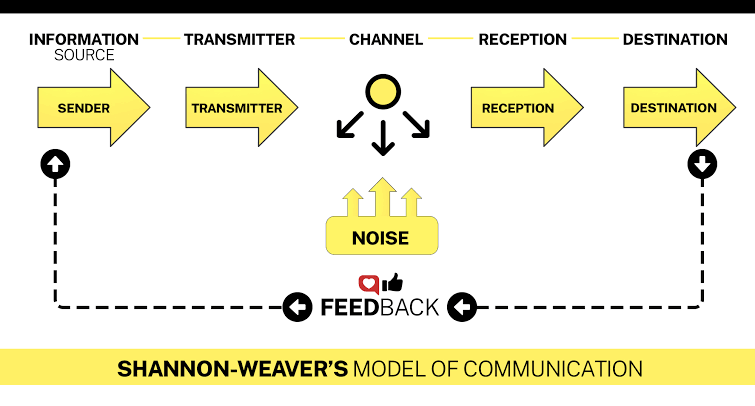Intrapersonal communication can be defined as “communication with one’s self and that may include self-talk, acts of imagination and visualization, and even recall and memory”. [1] For instance, if a one receives a message on the phone saying that his/her friends are going to have dinner at his/her favorite restaurant, the person might recall the related sights, sounds, and scents or something special that happened the last time they were together there. Subsequently, they might contemplate joining them and work out a plan of getting there from their present location to the restaurant. In this fashion, the concerned person will communicate with himself/herself through a stream of thoughts until a decision is made and a message is sent in reply. [1]
Joseph Jordania states Intrapersonal Communication to be an act of talking to oneself to avoid silence. According to him, the human ancestors used contact calls to maintain a connection with their group members from a distance, and any danger was signalled by becoming silent and freezing. Thus, owing to this history of human evolution, a prolonged silence is often perceived as a sign of danger, which triggers a feeling of uneasiness and fear. According to Jordania, talking to oneself is only one of the ways to fill these prolonged gaps of silence. Other ways of filling the prolonged silence are humming, whistling, finger drumming, etc. [2]
Such intrapersonal communication occurring in the mind of an individual fits right into the Shannon–Weaver model of communication. Shannon–Weaver model was co-authored in 1948 by the American Mathematician, Claude Elwood Shannon, and Warren Weaver through an article titled “A Mathematical Theory of Communication” that was in the Bell System Technical Journal. This model, which contains a sender, receiver, and feedback loop of communication, is also called the “mother of all models”. [3]

As portrayed by the graphical representation disclosed above, the Shannon Weaver Model is constituted of the following participants, mediums, and entities:
- Sender (Information source) – Sender is the person who makes the message, chooses the channel and sends the message.[3]
- Encoder (Transmitter) –Encoder is the sender who uses the machine, which converts the message into signals or binary data. It might also directly refer to the machine.[3]
- Channel –Channel is the medium used to send the message.[3]
- Decoder (Receiver) – Decoder is the machine used to convert signals or binary data into a message or the receiver who translates the message from signals.[3]
- Receiver (Destination) –Receiver is the person who gets the message or the place where the message must reach. The receiver provides feedback according to the message.[3]
- Noise –Noise is the physical disturbances like environment, people, etc. which does not let the message get to the receiver as what is sent.[3]
The sequential flow of the model commences with the Sender, wherein the sender encodes the message and sends it to the receiver through a technological channel like telephone and telegraph. The sender converts the message into codes understandable to the machine. The message is sent in codes through a medium. The receiver has to decode the message before understanding it and interpreting it. The receptor machine can also act as a decoder in some cases. The channel can have noise and the receiver might not have the capacity to decode which might cause problems in the communication process. [3]
In this context, as per communications expert Leonard Shedletsky, Intrapersonal Communication is constituted of eight basic components, namely source, receiver, message, channel, feedback, environment, context, and interference. But, in Intrapersonal Communication all the interactions between and among the components occur within the concerned individual. The entirety of the act of Intrapersonal communication, be it planning or problem-solving or internal conflict resolution or evaluations and judgments of self and others, happens within the Subject. [1] “All this interaction takes place in the mind without externalization, and all of it relies on previous interaction with the external world”. [1]
Reference:
- https://ecampusontario.pressbooks.pub/commbusprofcdn/chapter/what-is-intrapersonal-communication/
- https://en.wikipedia.org/wiki/Intrapersonal_communication
- https://en.wikipedia.org/wiki/Shannon%E2%80%93Weaver_model